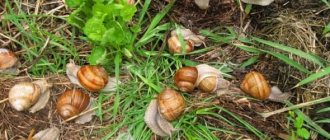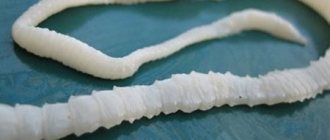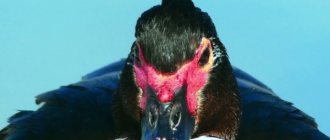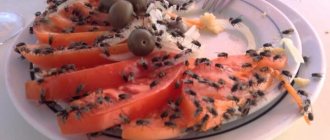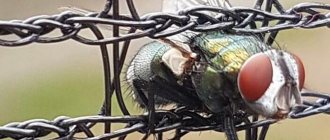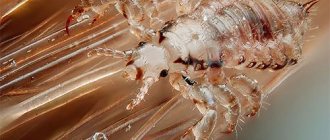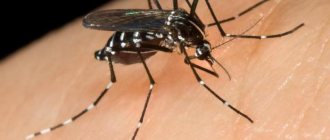Laying out males using a scalpel
Very often, veterinarians act the old fashioned way - they perform an operation on a ram that has reached six months, only by treating the skin with alcohol before cutting it. Few people think about doing anything to relieve the pain of the procedure.
But nevertheless, some people still believe that since animals are under the power of man and serve him, even as food, then he is simply obliged to reduce their suffering as much as possible. Therefore, shortened castration was invented not so long ago.
This procedure differs from the traditional method of surgery in that during it only the male’s scrotum is removed. The ram's testicles themselves remain intact, but are pushed up. Due to this, the male, although he produces testosterone, is not able to fertilize the sheep.
And finally, everyone knows about castration itself, during which the ram’s scrotum is cut, the testicles are released and removed. As a result of the operation, an open wound is left, which can become infected from the outside with dust, dirt, flies and other insects.
A person who decides to engage in cattle breeding should know more about his business. And that’s why it’s so important to keep abreast of all the innovations that scientists and veterinarians offer sheep farmers.
Who is more profitable to fatten - bulls or castrati?
It is usually recommended to castrate bulls before fattening. The meat of such animals is more tender, aromatic, and has well-defined marbling. The body is more proportionally developed, there is an equal ratio between the front and back of the carcass, the lower back and hips are better formed, and the bone structure is lighter.
However, under the same fattening conditions, castrates are inferior to bulls in terms of weight gain and feed costs. Thus, for every kilogram of weight gain, bull calves spend 0.5-1.3 less feed units than castrates. Bull meat is lean. The cessation of the action of sex hormones in castrates negatively affects the intensity of metabolic processes. This leads to increased fat formation to the detriment of the growth of other tissues, so castrated meat has a high fat content, which is undesirable.
In England, America, and Australia, bull meat is sold at a cheaper price. However, raising uncastrated animals is considered profitable, since the difference in price is compensated by the increased weight of the carcass and better payment for feed. The live weight of 15-18 month old bulls is 10-15 percent higher than that of castrati.
The meat of bulls, compared to the meat of castrates and heifers, is tougher, more fibrous, and has an unpleasant odor, but this only applies to the meat of old bulls, culled after the end of their breeding use. As for young meat, it has the only drawback - toughness.
The decision on whether to raise castrated or non-castrated animals for meat also depends on the breed. Thus, with intensive fattening of bulls of specialized meat breeds, it is possible to obtain less fatty meat from them than from castrates, who gain fat faster, and too fatty meat has less consumer demand. In addition, weight gain with a high fat content is more expensive.
On the other hand, it must be taken into account that castrati are calmer than bulls and are easier to care for. When feeding livestock on pasture and keeping beef cattle on pasture, castration is simply necessary. When fattening livestock on a leash, it is unnecessary to castrate the animals. In cases where castration is necessary, it is better to carry it out before the onset of puberty, but not earlier than 6-6.5 months of age. Early castration inhibits growth precisely at the same phase of development when muscles are intensively built up. Bulls of dairy breeds are castrated no earlier than 5-7 months of age.
Features of the anatomical structure of the gonads
The shape of the testes is oval, in young ones it is more elongated, and with maturity it becomes rounder. The sizes have a strong age dependence - during the period of mass castration (2-5 months) they usually do not exceed a chicken egg. The body of the testis consists of parenchymal tissue, separated by stroma, and connective tissue. A distinctive feature of rams is the weak development of stroma and the prevalence of parenchyma, which makes the testes less dense and durable.
The seminal appendage is represented by a network of convoluted vas deferens, forming a dense formation. It has separate nutrition due to the vessels of the vas deferens, which is separated from the umbilical branch.
The scrotum is a large skin sac that contains the gonads of the sheep. A specific feature is the low descent of the testes and the formation of a scrotal neck. Layers and shells:
- leather. Relatively thin in young rams, covered with small hair, containing fat and sweat glands, divided by a median suture;
- The muscular layer is a durable membrane connected to the skin and forming separate cavities for each testis. In old rams it contains developed fatty tissue;
- common tunica vaginalis - a layer formed by protrusion of the inner part of the abdominal wall when the testis descends;
- special vaginal membrane - covers the gonads along with the appendage.
How is castration done?
At the moment, two types of castration methods (in medicine - castration) of rams are known: bloodless and surgical.
Bloodless methods
Currently, two such methods are used.
The first method involves the use of a device such as a burizzo (also used for tail docking). With its help, the skin and flesh are compressed along with the testicles. The eggs become bled and, over time, dry out and die.
The advantage of this technique is the absence of open wounds, which eliminates the risk of infection and tetanus. A serious disadvantage of the burizzo method is its pain and time-consuming nature.
The second bloodless quenching method involves the use of rubber rings. The disadvantage of this method is that the procedure can take ten to twenty days.
Igor Nikolaev
auto RU
In some cases, the breeder performs so-called “shortened” castration using rubber rings. Its essence is that these rings only tighten the skin of the scrotum, without capturing the testicles themselves. This is not so painful, and gives the desired result, since the testicles raised up in this way are not able to participate in the fertilization process.
More on the topic: Subspecies of Welsh sheep and their characteristics
Notes
- ↑ 1 2 Elistratov V.S.
Dictionary of Russian argot. Article "Dude". M.: Russian dictionaries, 2000. - ↑
A. P. Barannikov. Gypsy elements in the Russian thieves' argot. — In the book: Language and Literature, vol. VII. L., 1931, p. 154. - ↑
E. D. Polivanov. For Marxist linguistics. M., 1931, p. 161. - ↑
A. F. Zhuravlev. Foreign language borrowings in Russian vernacular. — In the book: Urban vernacular. M., 1984, p. 108. - ↑
V. F. Trakhtenberg. Criminal music (“jargon” of prison). St. Petersburg, 1908. p. 36, 75. - ↑
S. Tsypin. Kharkov in stories and anecdotes. - Kharkov: Folio, 2001. - P. 265. - ↑
Uzlaner Mikhail. Russian "Fenya", speaking Yiddish.
Wikimedia Foundation. 2010.
See what “Dude” is in other dictionaries:
dude - Chuvash, guy Dictionary of Russian synonyms. dude noun, number of synonyms: 18 • ram (124) • bro ... Synonym dictionary
dude - DUDE, ah, m. Any person; used as well as appeal. Hey guys, come here. Cool dude (good). See also: steep Poss. through the corner; initially in sign. castrated ram (or camel); Poss. from ... Dictionary of Russian argot
DUDE - a person who respects high American culture, a person who has mastered high American culture, folklore... Dictionary of abbreviations and abbreviations
DUDE - Grumpy dude. Jarg. corner. A man posing as a thief. SRVS 4, 77, 106, 137; HHS, 197. Zero dude. Jarg. they say Disapproved A man without money. Maksimov, 278. Dude from the mountain. Jarg. they say Approved About a lucky, successful person. Maksimov ... Large dictionary of Russian sayings
dude - 1). A Man Who Respects the Great American Culture. The word was coined by Moscow hipsters in the 2nd half of the 1950s. 2). According to the Dictionary of Russian Argot by V. S. Elistratov (M., 2000), a dude is any person, this word is also used ... ... Party jargon
Why do sheep farmers sometimes resist covering females?
Often different animals are kept on the same farm. A sheep farmer, for example, purchased individuals of more advanced breeds. But he still has some young stock left from the previous plant. Mixing different breeds of animals is not only pointless, but also harmful.
Some females, being early ripening, are ready for mating at a fairly young age. But fertilization ahead of time will undermine the health of the animal; its offspring may be weak and non-viable.
There is also the danger of covering the ewe with a weak ram. This can also lead to the birth of a low-quality offspring.
To prevent this from happening, the farmer is forced to keep males and females separately. And he also has to allocate pastures for grazing in different places. And this requires attracting additional labor units and financial investments. Therefore, the easiest way out here would be to castrate outbred or simply excess rams. Indeed, for the normal functioning of a herd of 15 sheep, one full-fledged adult ram is quite enough.
